
Browse an alphabetical list of photographs. These historical images portray people, places, and events before, during, and after World War II and the Holocaust.
<< Previous | Displaying results 301-350 of 2641 for "Photo" | Next >>
A group of Armenian refugees. 1915-20. Sometimes called the first genocide of the twentieth century, the Armenian genocide refers to the physical annihilation of Armenian Christian people living in the Ottoman Empire from spring 1915 through autumn 1916. There were approximately 1.5 million Armenians living in the multiethnic Ottoman Empire in 1915. At least 664,000 and possibly as many as 1.2 million died during the genocide, either in massacres and individual killings, or from systematic ill treatment,…
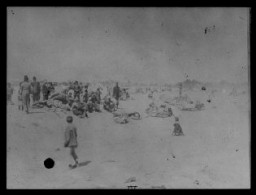
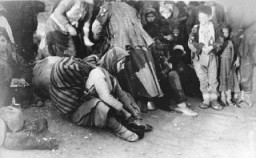
Refugees foraging at Alexandropol, Russian Armenia. Photograph taken by John Elder. In 1917, Elder, a divinity student from Pennsylvania, joined the American Committee for Armenian and Syrian Relief team that was aiding refugees. For two years, Elder did volunteer work with Armenian orphans. During that time, he photographed refugees and conditions at camps.
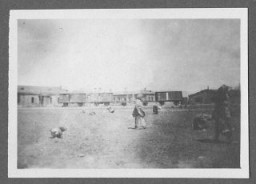
Armenian refugees in the desert. A man in the foreground lies on the ground on a layer of bedding. 1915-20.
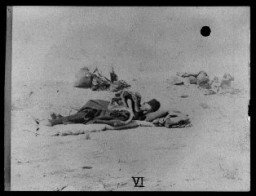
Army Military Police guarding the boundaries of the Manzanar Relocation Center in California, one of ten relocation camps where American residents of Japanese ancestry were forcibly deported, April 2, 1942.
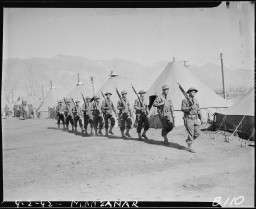
Portrait of US combat photographer Arnold E. Samuelson. France, 1944-1945. Samuelson took some of the best known photographs of Holocaust survivors upon the liberation of the camps.
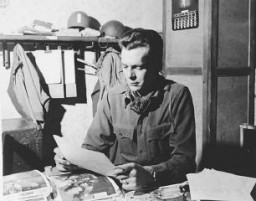
Aron and Lisa in Poland, ca. 1994, while accompanying high school students as part of a "Shoreshim" group.

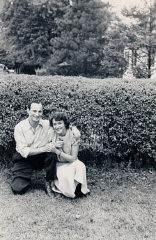
Aron and Lisa when they came to America. Photograph probably taken in Chicago, Illinois, 1947.

Aron and Lisa with Tadek Soroka, the Pole who helped them escape, on the occasion of Soroka's recognition as a "Righteous among the nations" by Yad Vashem. Jerusalem, Israel, 1983.
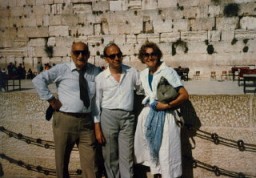
Aron and Lisa with the Emmy they won for their 1997 documentary, A Journey of Remembrance. Photograph taken in Northbrook, Illinois, 1998.
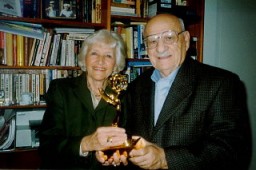
Aron and Lisa's firstborn child, Howard. Chicago, Illinois, 1949.
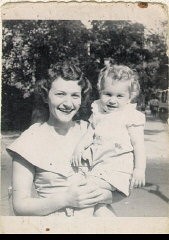
Aron and Lisa's three sons (Howard, Gordon, and Daniel) at the middle son's graduation from the University of Wisconsin. Madison, Wisconsin, ca. 1972.
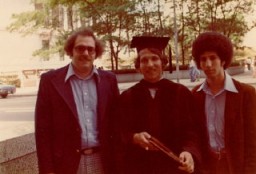
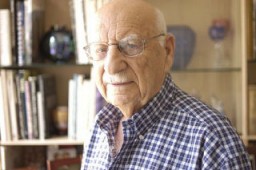
Aron Derman and Neenah Ellis look at one of Aron's family photographs. 2004.
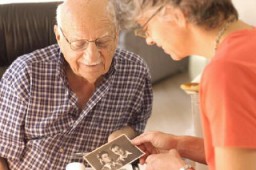
Aron Derman while he was with Polish partisans in 1944. In this photograph, Aron wears a fur hat that he made and boots that he finished himself (he found them in the ghetto, unfinished, and sewed them up). Lisa Nussbaum was also a member of the partisans. Aron recounted that for a short while, Lisa was in charge of 200 women. Photograph taken in 1944, in a partisan base in the Naroch forest.
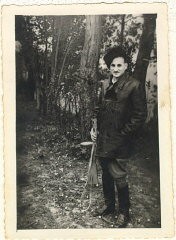
Aron in Budapest, 1945, while en route from Poland to Italy with Brihah, moving to Palestine. In Aron's words: "We got connected with the Brihah in Poland, got directions to go to Bratislava and on to Budapest. On our trip, we didn't know where we going from city to city, only our final destination." July 5, 1945, Budapest, Hungary.
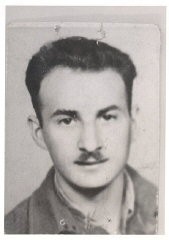
Aron standing in Howard's men's clothing store (named for his eldest son) at 9125 Commercial Avenue in Chicago. He opened the store in 1949 and owned it for 30 years. Chicago, Illinois, early 1970s.
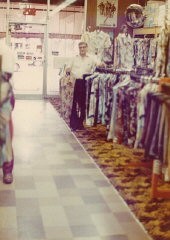
Aron in Teaneck, New Jersey, in the early 1970s. This photograph was taken by Hyman Alpert, known as "Trigger." Alpert, a cousin of Aron's, was a musician with the Glenn Miller Orchestra. Alpert went on to become a photographer in Teaneck.
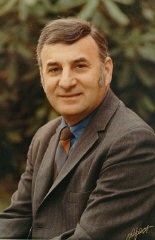
Aron standing in Howard's men's clothing store (named for his eldest son) at 9125 Commercial Avenue in Chicago. He opened the store in 1949 and owned it for 30 years. Chicago, Illinois, early 1970s.
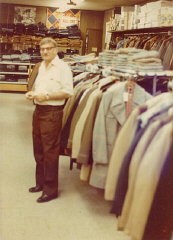
A British policeman (left) organizes the arrest of passengers from the Aliyah Bet ("illegal" immigration) ship Parita after they disembarked near Tel Aviv. Palestine, August 22, 1939.
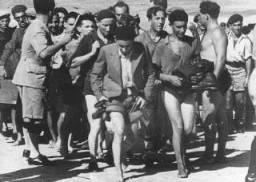
A waiter from Düsseldorf who was arrested by the Gestapo for allegedly having sexual relations with other men. Düesseldorf, Germany, 1938. [RW 58-61940] The Nazi regime considered homosexuality a moral vice that threatened the current and future strength of the German people. They carried out a campaign against male homosexuality that included shutting down gay and lesbian meeting places and arresting men under Paragraph 175, the statute of the German criminal code that banned sexual relations between…
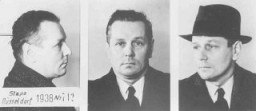
A transport of Jews from Hungary arrives at Auschwitz-Birkenau. Poland, May 1944.
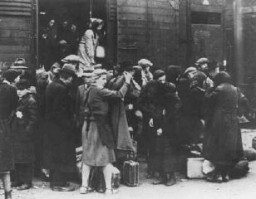
Jews from Subcarpathian Rus get off the deportation train and assemble on the ramp at the Auschwitz-Birkenau killing center in occupied Poland. May 1944.
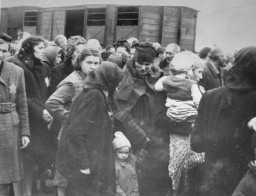
Newly arrived prisoners at the Buchenwald concentration camp. Buchenwald, Germany, 1938-1940.

Shaving an inmate upon arrival at the Sachsenhausen concentration camp. Germany, February 1941.
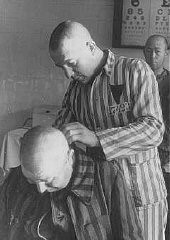
Arrival of a transport at the Westerbork camp. Westerbork, the Netherlands, October 1942.
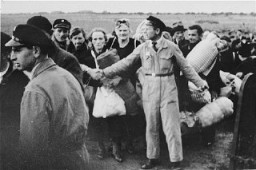

Arrival of a transport of Dutch Jews in the Theresienstadt ghetto. Czechoslovakia, February 1944.
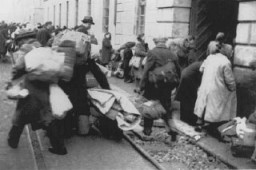
A transport of Hungarian Jews lines up on the ramp for selection at the Auschwitz-Birkenau killing center in German-occupied Poland. May 1944. In mid-May 1944, the Hungarian authorities, in coordination with the German Security Police, began to systematically deport the Hungarian Jews. SS Colonel Adolf Eichmann was chief of the team of "deportation experts" that worked with the Hungarian authorities. The Hungarian police carried out the roundups and forced the Jews onto the deportation trains. In…
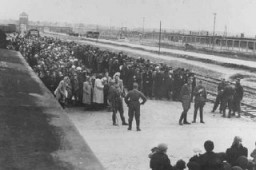
Arrival of Jewish refugees from Germany. The Joint Distribution Committee (JDC) helped Jews leave Germany after the Nazi rise to power. France, 1936.
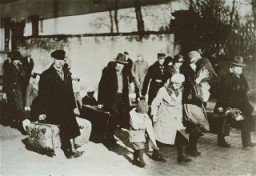
Arrival of Polish Jewish displaced persons in Vienna. They were sheltered at the Rothschild Hospital displaced persons camp. Vienna, Austria, 1946.
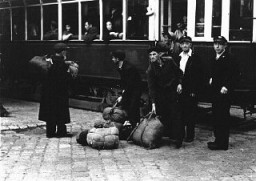
A group of Polish Jewish refugee children, known as the "Tehran Children," arrives in Palestine via Iran. Atlit reception camp, Palestine, February 18, 1943.

Jewish refugee children unfurl the Zionist flag as they arrive at the Haifa port aboard Aliyah Bet ("illegal" immigration) ship SS Franconia. Palestine, September 1945.
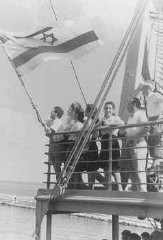
Jewish refugees from Europe arrive at the emergency refugee shelter at Fort Ontario, in the United States. A father, holding his daughter, checks his tags. Oswego, New York, United States, August 4, 1944.
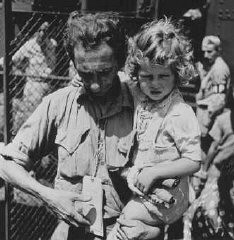
Children aboard the President Harding look at the Statue of Liberty as they pull into New York harbor. They were brought to the United States by Gilbert and Eleanor Kraus. New York, United States, June 1939.
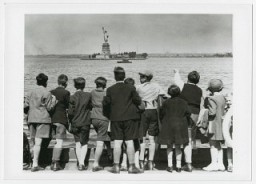
Children aboard the President Harding look at the Statue of Liberty as they pull into New York harbor. They were brought to the United States by Gilbert and Eleanor Kraus. New York, United States, June 1939.
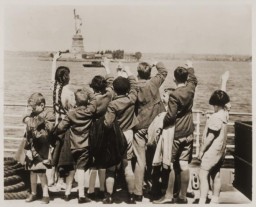
A group of German and Austrian Jewish refugee children arrives in New York on board the SS President Harding. New York, United States, June 3, 1939.
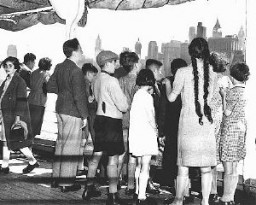
Four Polish women arrive at the Nuremberg train station to serve as prosecution witnesses at the Doctors Trial. From left to right are Jadwiga Dzido, Maria Broel-Plater, Maria Kusmierczuk, and Wladislawa Karolewska. December 15, 1946.
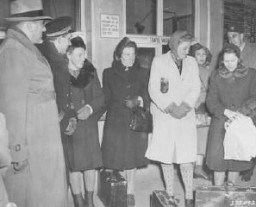
Eight-year-old Yisrael Meir (Lulek) Lau is held by a fellow Buchenwald survivor, Elazar Schiff, as they arrive in Palestine aboard the RMS Mataroa. Haifa, Palestine, July 15, 1945.
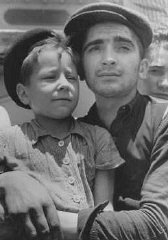
German Jewish refugees disembark in the port of Shanghai, one of the few places without visa requirements. Shanghai, China, 1940.
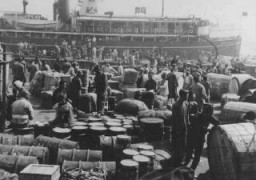
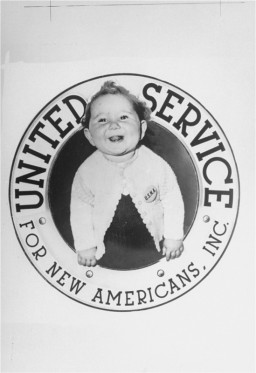
An art class for children in the Fiesole displaced persons camp, outside Florence. Italy, 1946.
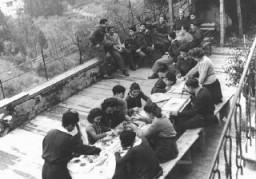
Art handlers at the Schloss Niederschoenhausen storage depot hold a section of Emil Nolde’s confiscated “Das Leben Christi,” 1937. The Nazi regime confiscated the work as "degenerate" art.
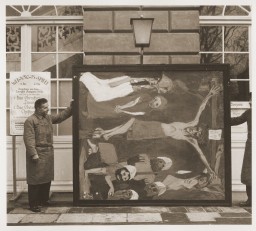
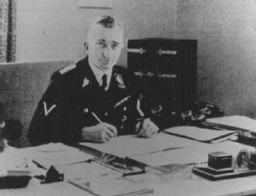
Austrian Nazi Arthur Seyss-Inquart. After the German invasion of the Netherlands in May 1940, a civil administration was installed under SS auspices. Seyss-Inquart was appointed Reich Commissar.
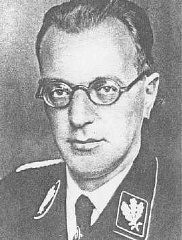
Georg Grosz, a Communist satirical artist and painter, seen here in his studio in Berlin. He fled Germany shortly before the Nazi rise to power in 1933 and was one of the first to be stripped of his German citizenship by the Nazis. Berlin, Germany, 1929.
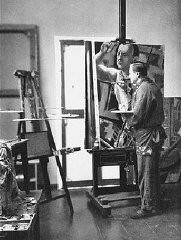
Marc Chagall, the Russian Jewish artist, at work in his studio in southern France. Gords, France, 1940.
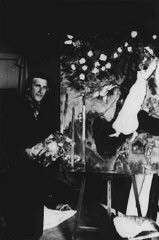
Works of confiscated art—including those by Pablo Picasso, Henri Matisse, and Vincent van Gogh—line the walls of the Schloss Niederschoenhausen storage depot. The Nazi regime confiscated the works as "degenerate" art.
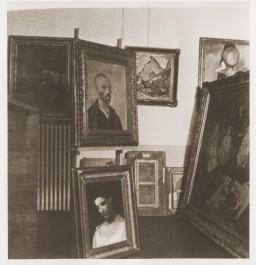
"Aryanization" in France: this shop, belonging to Jews, has been given to a non-Jewish "temporary administrator." Paris, April 1942.
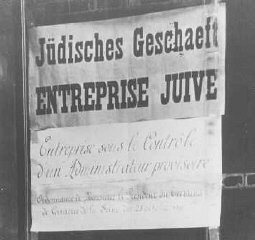
We would like to thank Crown Family Philanthropies, Abe and Ida Cooper Foundation, the Claims Conference, EVZ, and BMF for supporting the ongoing work to create content and resources for the Holocaust Encyclopedia. View the list of donor acknowledgement.